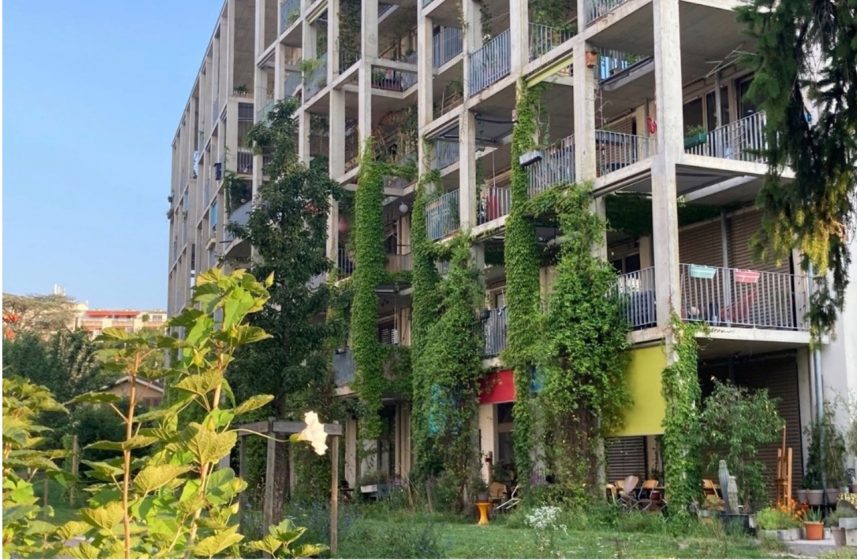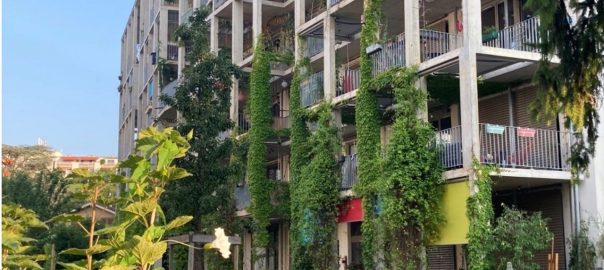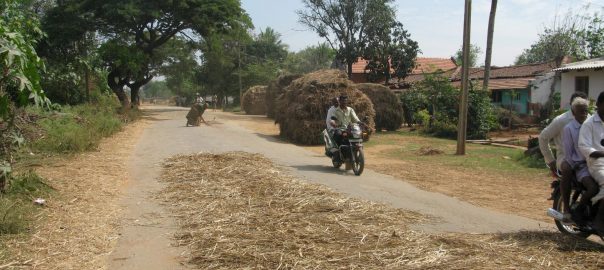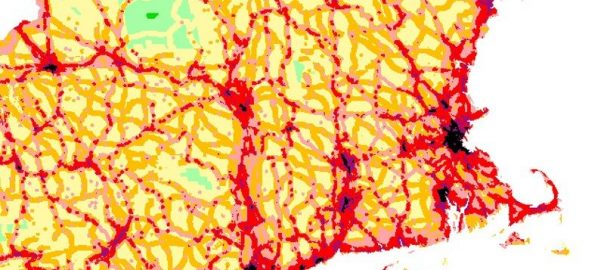Project study within the framework of the Swiss Biodiversity Strategy Action Plan
Increasing building density is putting pressure on green spaces and thus on the living conditions for flora, fauna, and humans. However, the sixth IPPC report and the COVID-19 pandemic clearly show green spaces that enable recreation and the experience of nature in the immediate surroundings are central to both our well-being and biodiversity. To achieve the goal in despite of, or especially, because of the densification stipulated in the Spatial Planning Act (RPG1)[i], new and additional ways are needed for high-quality open and green spaces within sustainable urban and settlement development. As a supplement to parks and gardens, the greening of buildings (facades and roofs) and measures that enable the settlement of wildlife play an important role. They make an important contribution to compensating for diminishing green spaces, providing habitats for flora and fauna, contributing to a better microclimate, having a positive influence on our quality of life and health, and, at the same time, strengthening the attractiveness of the cityscape.
Switzerland is well known for more than two decades for its extensive flat green roofs as ecological compensation surfaces. These surfaces have the purpose of promoting urban biodiversity, using local substrate mixtures and local seeds/plants to reduce the local footprint, and provide rare dry habitats for rare species and other species (generalists and specialists). However, even though there is already a long tradition of greening buildings, especially roofs, as well as legal requirements and conditions imposed by some cities and municipalities, it is not the actual case that all flat roofs in Switzerland are greened. Why is that? And why are there not more such areas? This study investigated this question and others.



On behalf of the Federal Office for the Environment (FOEN), the Urban Landscape Institute of the Department of Architecture, Design and Civil Engineering, in collaboration with the Environment and Natural Resource Sciences Institute of the Department Life Sciences and Facility Management, has produced a study that compiles the existing knowledge, researches and evaluates it based on good practice examples of buildings in Switzerland, and concretely researches and vividly documents their development processes.
In the process, the following topics were scrutinized: Description of the various available technical solutions, but also the potential and the associated challenges and their ecological impact, as well as the associated care and maintenance requirements. Furthermore, the valid regulations and legal bases on the level of public authorities and in the private sector are shown. The whole final report will be deepened with expert interviews on individual key topics or good practice examples and is intended to highlight the gaps regarding the application in planning and implementation even more.
In close cooperation with communication experts, guidelines for action will be developed that will make it easier for cantonal and municipal administrations as well as actors in the private planning and construction sector to better exploit the potential of buildings for the promotion of biodiversity and landscape quality and to communicate between the individual disciplines as well as between the professional world and the population.
Results
During the preparation of the study, it became apparent that in addition to anchoring biodiversity at the legislative level and in education, the planning and implementation process as well as communication play an important role. Communication is central in two ways: it is a success factor in the process and the vehicle for communicating and promoting biodiversity on the building. Within the process, it ensures the functioning of interdisciplinary cooperation and creates acceptance and identification thanks to participation and information. The focus of communication in communicating and promoting the topic is to raise awareness among the relevant groups of actors of the relevance, the options, the opportunities ― and the attractiveness ― of biodiversity-promoting measures in densely populated areas. In particular, planners and decision-makers should be shown, by means of good examples and “ambassadors”, that biodiversity-promoting measures can be exciting design elements and create attractive buildings and open spaces. It is crucial that the topic of biodiversity in the context of the built landscape is considered holistically and not only in individual aspects. Cross-thematic and cross-disciplinary cooperation is therefore also of central importance for the communication and promotion of the topic.

Outlook
The next step should be to develop concrete steps and measures based on the findings and proposed recommendations for action ― and in coordination with the results of the other, thematically related studies: So that biodiversity in densely populated areas can be established as a basic prerequisite for the sustainable further development of our living space.
Nathalie Baumann and Anke Domschky
Zurich

about the writer
Anke Domschky
Anke Domschky is a landscape architect and urban planner at the Urban Landscape Institute of the Department of Architecture, Design and Civil Engineering in Zurich (Zurich University of Applied Sciences).
Acknowledgments
The authors would like to thank Séverine Evéquoz and Claudia Moll of the FOEN for commissioning the study and for their trust. A big thank you goes to Sarah Jüstrich and Stefanie Wiesinger, the project partners Andrea Schafroth and Monique Rijks (s2r.gmbh), Ewa Renaud and Alix Jornot (HEPIA, University of Applied Sciences in Geneva) as well as the numerous experts.
The Spatial Planning Act (RPG) is a Swiss federal law that regulates spatial development in Switzerland. It was enacted on the basis of Art. 75 of the Federal Constitution and aims to ensure the economical use of land. In particular, the natural foundations are to be protected and residential settlements and the spatial conditions for the economy are to be created and maintained. In the referendum of 3 March 2013, voters approved a revision of the Spatial Planning Act with 62.9% in favour, as an indirect counter-proposal to the withdrawn federal popular initiative “Space for People and Nature (Landscape Initiative)”[i]












Add a Comment
Join our conversation